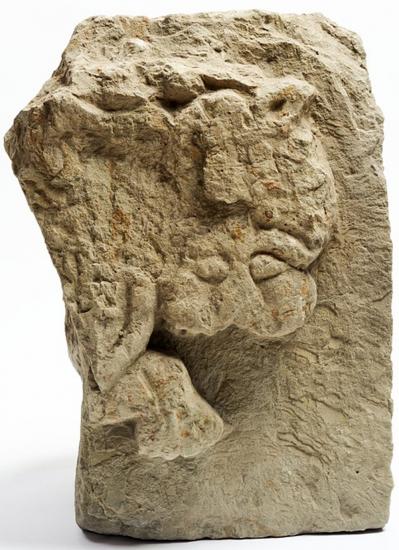Owen Jarus
Source - http://www.livescience.com/48433-city-ruled-by-genghis-khan-heirs.html?utm_source=feedburner&utm_medium=feed&utm_campaign=Feed%3A+Livesciencecom+%28LiveScience.com+Science+Headline+Feed%29

Archaeologists with the Saratov Regional Museum of Local Lore have uncovered part of the ancient city of Ukek, founded by the descendents of Genghis Khan. Credit: Photo courtesy Dmitriy Kubankin
Remains of a 750-year-old city, founded by the descendents of Genghis Khan, have been unearthed along the Volga River in Russia.
Among the discoveries are two Christian temples one of which has stone carvings and fine ceramics.
The city’s name was Ukek and it was founded just a few decades after Genghis Khan died in 1227. After the great conqueror’s death his empire split apart and his grandson Batu Khan, who lived from 1205 to 1255, founded the Golden Horde (also called the Kipchak Khanate).The Golden Horde kingdom stretched from Eastern Europe to Central Asia and controlled many of the Silk Road trade routes that connected China to Medieval Europe.
This city of Ukek was built close to the khan's summer residence along the Volga River, something which helped it become prosperous. The name "Golden Horde" comes from the golden tent from which the khan was said to rule. [See Photos of the Medieval 'Golden Horde' City and Artifacts]
Christian quarter
Archaeologists with the Saratov Regional Museum of Local Lore have discovered the Christian quarter of Ukek, shedding light on the Christian people who lived under the Khan's rule. Ukek was a multicultural city, where a variety of religious beliefs were practiced including Islam, Christianity and Shamanism.
While Christians did not rule the Golden Horde, the discoveries archaeologists made show that not all the Christians were treated as slaves, and people of wealth frequented the Christian quarter of the city.
"Some items belonging to local elite were found in the Christian district," Dmitriy Kubankin, an archaeologist with the Saratov Regional Museum of Local Lore, told Live Science in an email."Among other things, there is a Chinese glass hair pin, with a head shaped as a split pomegranate, and a fragment of a bone plate with a carved dragon image."
Stone temples
Among the discoveries are the basements of two Christian temples. In eastern Christianity churches are sometimes called temples.

A bas relief showing a lion being clawed by a griffin was found in the remains of a Christian temple at the Ukek city site. Credit: Photo courtesy Dmitriy Kubankin
One of the temples was built around 1280 and was destroyed in the early 14th century. "It was roofed with tiles and decorated with murals and stone carving[s], both, from the outside and inside," Kubankinsaid.
"The best-preserved bas relief (a type of stone carving) features a lion being clawed by a griffin," said Kubankin, noting that another carving depicts a cross.
Within the basement of the temple, archaeologists found the remains of goods that may have been stored by local merchants, including fine plates and bottles that were imported from the Byzantine Empire, Egypt or Iran. "Any church cellar was considered a safe place to store goods in it, therefore, merchants from the nearest neighborhood used to keep (objects) of sale there," Kubankin said.
After the first Christian temple was destroyed in the early 14th century, a second temple was built in 1330 and remained in use until about 1350. "Most probably, it was stone-walled and had a tile roof. A part of its foundation with the apse has been unearthed," Kubankin said.
The fall of Ukek
The city of Ukek did not last for long. During the 14th century, the Golden Horde began to decline, and in 1395 Ukek was attacked by a ruler named Tamerlane, a man out to build an empire of his own. He destroyed Ukek and took over much of the territory formerly ruled by the Golden Horde, dealing them a blow from which they would never recover.
Today modern-day buildings cover much of Ukek. "This hampers any research and prevents complete unearthing of the entire [site], because it extends over several private land plots," Kubankin said.
“Nevertheless, digging just in one site may lead to significant discoveries. Archaeological expeditions from the Saratov Regional Museum of Local Lore [have made] yearly excavations since 2005," said Kubankin, adding thatthese discoveries will soon be featured in a museum exhibition.
Kubankin presented the team's finds recently at the European Association of Archaeologists' annual meeting in Istanbul. The study is supported by the Saratov Regional Ministry of Culture, Russian Humanitarian Research Foundation grant (project 12-31-01246) and by the RIMKER Company.